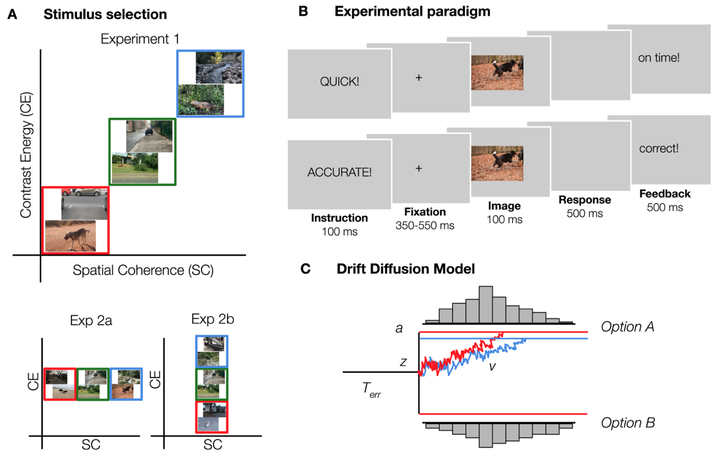
Abstract
A fundamental component of interacting with our environment is gathering and interpretation of sensory information. When investigating how perceptual information influences decision-making, most researchers have relied on manipulated or unnatural information as perceptual input, resulting in findings that may not generalize to real-world scenes. Unlike simplified, artificial stimuli, real-world scenes contain low-level regularities that are informative about the structural complexity, which the brain could exploit. In this study, participants performed an animal detection task on low, medium or high complexity scenes as determined by two biologically plausible natural scene statistics, contrast energy (CE) or spatial coherence (SC). In experiment 1, stimuli were sampled such that CE and SC both influenced scene complexity. Diffusion modelling showed that the speed of information processing was affected by low-level scene complexity. Experiment 2a/b refined these observations by showing how isolated manipulation of SC resulted in weaker but comparable effects, with an additional change in response boundary, whereas manipulation of only CE had no effect. Overall, performance was best for scenes with intermediate complexity. Our systematic definition quantifies how natural scene complexity interacts with decision-making.We speculate that CE and SC serve as an indication to adjust perceptual decision-making based on the complexity of the input.